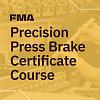Senior Editor
- FMA
- The Fabricator
- FABTECH
- Canadian Metalworking
Categories
- Additive Manufacturing
- Aluminum Welding
- Arc Welding
- Assembly and Joining
- Automation and Robotics
- Bending and Forming
- Consumables
- Cutting and Weld Prep
- Electric Vehicles
- En Español
- Finishing
- Hydroforming
- Laser Cutting
- Laser Welding
- Machining
- Manufacturing Software
- Materials Handling
- Metals/Materials
- Oxyfuel Cutting
- Plasma Cutting
- Power Tools
- Punching and Other Holemaking
- Roll Forming
- Safety
- Sawing
- Shearing
- Shop Management
- Testing and Measuring
- Tube and Pipe Fabrication
- Tube and Pipe Production
- Waterjet Cutting
Industry Directory
Webcasts
Podcasts
FAB 40
Advertise
Subscribe
Account Login
Search
Got to get to work
- By Tim Heston
- May 19, 2009
A keynote speaker at last week's ALAW Laser Applications Workshop—an annual industry conference about lasers in automotive and general fabrication—gave some valuable perspective on the automotive industry. Bernard Swiecki of the Dearborn, Mich.-based Center for Automotive Research talked at length about (metaphorically speaking) some dying trees and major fires wiping out the underbrush; ultimately, though, the forest will survive and continue to grow.
From January to April, now bankrupt Chrysler had sales more than 61 percent—yes, 61 percent—down from the previous year. And it's not just the Detroit Three; everyone is suffering. He said that Toyota, "often described as a company that can do no wrong," actually has a job bank (which essentially pays people not to work) that's larger than that of Ford, Chrysler, and GM. Toyota also put a massive investment in U.S. production of the Prius on hold.
The trees aren't healthy.
But the forest won't disappear, he said, as shown by one chart that depicted a steady, upward trend over the years (unusual, these days). The number of car registrations continues to increase, unabated. In fact, even though the auto business has been highly cyclical, car registrations haven't been. Why?
"This is how Americans get to work," Swiecki said.
According to his presentation, 87 percent of Americans use cars to get to work today, and the percentage hasn't changed for years, simply because public transportation for most Americans either isn't available, or it's extremely inconvenient. "It's going to take hundreds of billions of dollars in infrastructure investment to change this trend," he said, adding that as the population gradually grows, so will the need for cars.
The Detroit Three may never regain the dominance they had, and the New Domestics likely will gain an even greater foothold. Toyota, which entered the downturn with a lot of cash, undoubtedly will emerge healthier than many competitors. And the kinds of cars Americans drive will change. Swiecki said it may go back to the way it was in the 1960s. Most will drive cars, and some will drive trucks (not just for fun, but out of necessity). Crossovers may have a bright future in the near term. But those gas-guzzling SUVs likely will take up a small slice of the market in the years to come.
Still, Americans need to get to work, and cars don't last forever. We drive too much for cars not to be made here. One day, even the most frugal car buyer will need to junk the old jalopy and replace it with something new. He may just deal with a very different automotive industry.
subscribe now

The Fabricator is North America's leading magazine for the metal forming and fabricating industry. The magazine delivers the news, technical articles, and case histories that enable fabricators to do their jobs more efficiently. The Fabricator has served the industry since 1970.
start your free subscriptionAbout the Author

Tim Heston
2135 Point Blvd
Elgin, IL 60123
815-381-1314
Tim Heston, The Fabricator's senior editor, has covered the metal fabrication industry since 1998, starting his career at the American Welding Society's Welding Journal. Since then he has covered the full range of metal fabrication processes, from stamping, bending, and cutting to grinding and polishing. He joined The Fabricator's staff in October 2007.
- Stay connected from anywhere

Easily access valuable industry resources now with full access to the digital edition of The Fabricator.

Easily access valuable industry resources now with full access to the digital edition of The Welder.

Easily access valuable industry resources now with full access to the digital edition of The Tube and Pipe Journal.
- Podcasting
- Podcast:
- The Fabricator Podcast
- Published:
- 05/07/2024
- Running Time:
- 67:38
Patrick Brunken, VP of Addison Machine Engineering, joins The Fabricator Podcast to talk about the tube and pipe...
- Trending Articles
How laser and TIG welding coexist in the modern job shop

Young fabricators ready to step forward at family shop

Material handling automation moves forward at MODEX

A deep dive into a bleeding-edge automation strategy in metal fabrication

Precision Press Brake Certificate Course

- Industry Events
World-Class Roll Forming Workshop
- June 5 - 6, 2024
- Louisville, KY
Advanced Laser Application Workshop
- June 25 - 27, 2024
- Novi, MI
Precision Press Brake Certificate Course
- July 31 - August 1, 2024
- Elgin,


























